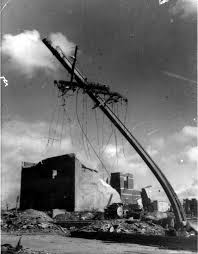Hiroshima: From Devastation to Resilience

The Significance of Hiroshima
The city of Hiroshima, known worldwide for being the first target of an atomic bomb during World War II, represents a crucible of human suffering and resilience. Its transformation from a scene of devastation to a symbol of peace is both significant and inspiring. Understanding Hiroshima’s past is crucial as it warns against the perils of nuclear warfare and emphasizes the importance of global peace initiatives.
A Historical Overview
On August 6, 1945, Hiroshima experienced an unprecedented catastrophe when the U.S. dropped the atomic bomb “Little Boy,” resulting in the deaths of approximately 140,000 people by the end of that year. The explosion obliterated 90% of the buildings in the city, leaving survivors, known as hibakusha, to endure not only physical injuries but also psychological trauma.
Rebuilding and Renewal
In the decades following the bombing, Hiroshima underwent a remarkable transformation. The Hiroshima Peace Memorial Park was established in 1954, acting as a solemn reminder of the past while serving as a space for hope and reflection. The iconic Atomic Bomb Dome, a UNESCO World Heritage site, remains standing as a testament to the city’s resilience amidst destruction.
Current Events: Promoting Peace
Today, Hiroshima is not only a city recovered from destruction but also a leading advocate for nuclear disarmament and global peace. The annual Hiroshima Peace Memorial Ceremony, held on August 6, gathers survivors, dignitaries, and visitors from around the globe to remember the past and promote a peaceful future. In recent years, the city has taken a proactive role in international dialogues surrounding nuclear weapons, reinforcing its commitment to ensuring that such tragedies are never repeated.
Looking Ahead
As the world navigates complex geopolitical tensions, Hiroshima’s story serves as a beacon of hope and a powerful reminder of the consequences of war. The continued efforts for peacebuilding initiatives and remembrance of the atomic bombing amplify the need for comprehensive discussions on nuclear disarmament. Future generations must learn from the past to foster a world where peace prevails over conflict.
Conclusion
Hiroshima’s evolution from a place of horror to a symbol of resilience showcases the strength of the human spirit. As we reflect on its history, we must carry forward the lessons learned into our communities, encouraging both remembrance and the unwavering commitment to peace. Hiroshima stands not just as a marker of tragedy, but as a testament to recovery, hope, and the possibility of a brighter future.





